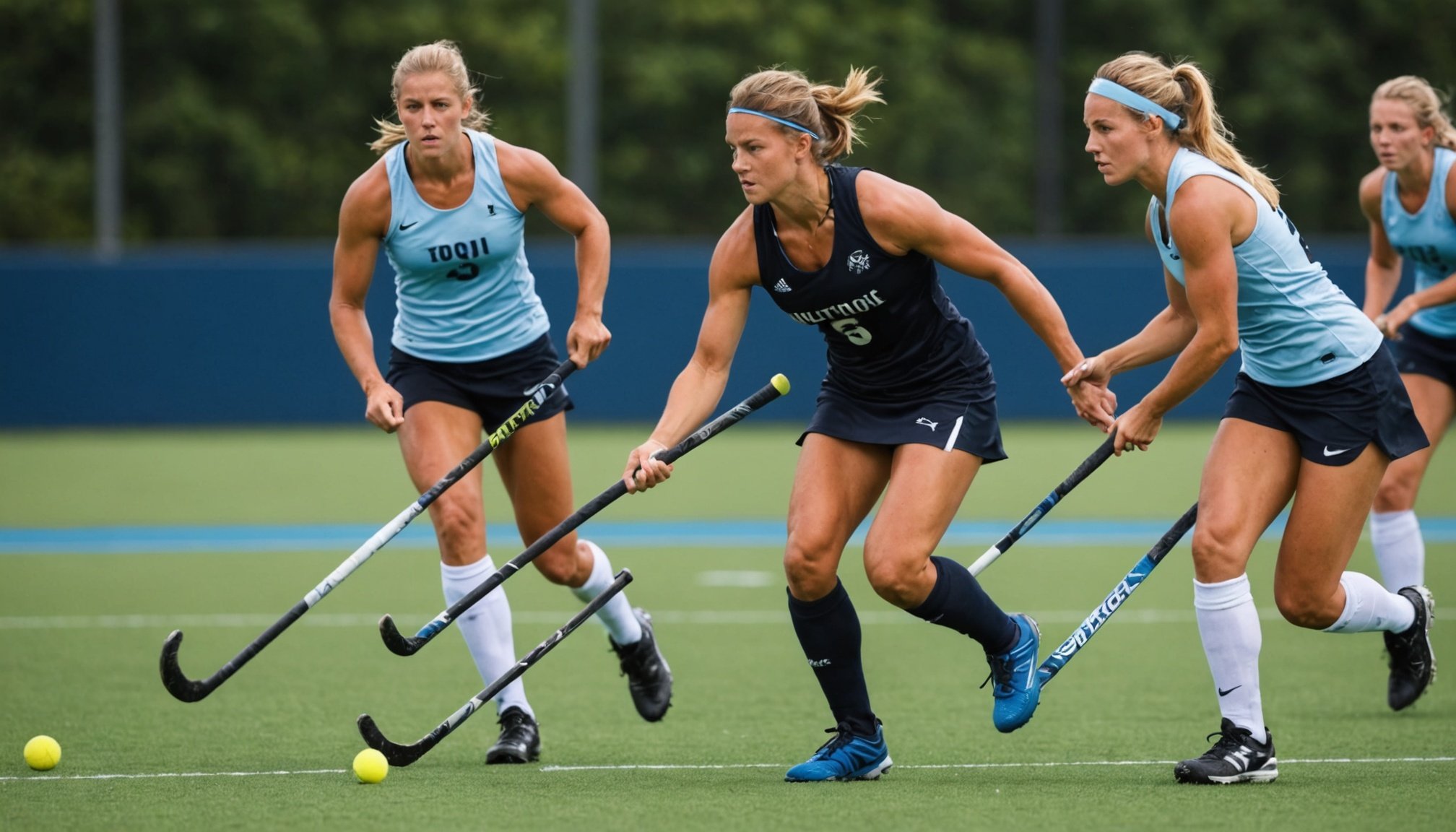Importance of Sprint-Focused Conditioning in Field Hockey
Incorporating sprint conditioning is crucial for enhancing field hockey performance. This athletic training method targets specific abilities to navigate the field with superior speed and agility. Speed is integral to the game, enabling players to outmaneuver opponents and exploit competitive advantages.
Field hockey is a high-intensity sport where quick bursts of acceleration can determine the outcome of a match. Players need exceptional sprint performance to execute quick transitions, defensive recoveries, and offensive breaks. Therefore, sprint-focused conditioning is indispensable for maximizing a player’s effectiveness during critical moments.
Have you seen this : Unlocking Performance: The Powerful Impact of Strength Training for Runners
This tailored conditioning approach provides substantial benefits, including enhanced muscle strength, improved anaerobic capacity, and reduced injury risk. Designed exercises such as interval sprints and agility drills increase not only the physical capability but also the player’s confidence in their sprinting potential. These gains translate directly into improved in-game performance, making sprint conditioning a pivotal element of field hockey success.
Moreover, well-conditioned players with efficient sprint techniques contribute to team dynamics by maintaining pressure on the opposition, effectively leading to more opportunities. As a result, focusing on sprint conditioning doesn’t just elevate individual capabilities but fosters a competitive team ethos, imperative in high-stakes competitions.
Topic to read : Top Core Strengthening Exercises Every Equestrian Should Master for Improved Riding Performance
Developing a Sprint-Focused Conditioning Routine
Designing an effective conditioning routine for field hockey is crucial for improving athletic performance. This requires a well-thought-out training plan and careful exercise preparation to ensure athletes can maximise their sprinting capabilities.
Assessing Current Fitness Levels
It’s essential to start with an understanding of each player’s current fitness level. Performance baseline assessments provide a snapshot of where an individual stands regarding their sprinting abilities. Types of fitness tests might include timed sprints, endurance runs, and agility tests. These help set individual goals and identify areas needing improvement.
Structuring a Conditioning Schedule
Once baseline levels are established, structuring a conditioning routine becomes the next step. Sprint training should be incorporated into the plan, with a recommendation of two to three sessions per week, complemented by skill and strategy training. Allowing sufficient rest and recovery time is important for preventing injury. Following a progressive overload plan ensures that the exercises gradually become more challenging, fostering continuous improvement.
Incorporating Sprint Drills and Exercises
An effective training plan includes both sprint drills and exercises tailored to field hockey. Agile movement can be enhanced through plyometrics, and incorporating resistance training can boost sprint performance. Regular updating of the conditioning routine ensures athletes continue progressing and are prepared for the demands of field hockey.
Measuring Progress and Performance
Understanding how to effectively use performance metrics is crucial for tracking progress in any training regimen. This approach allows athletes and coaches to identify strengths, weaknesses, and areas for improvement. By closely monitoring these metrics, they can ensure training is both productive and efficient. Improvement tracking helps in setting realistic goals and celebrating achievements, boosting morale.
To achieve the most from these metrics, regular assessment and feedback are indispensable. Regular evaluations help in recognising performance trends and adjusting strategies accordingly. They provide insights into which exercises are effective and which might need modification to better suit an athlete’s needs.
Training feedback should be twofold: quantitative, using data from performance metrics, and qualitative, gained from the athlete’s personal insights. These combined perspectives create a comprehensive view of progress, supporting more informed decisions about future training plans.
Strategies for modifying training plans based on measurable progress should include:
- Adjusting intensity based on metric trends
- Implementing rest days when performance dampens
- Emphasising exercises that show minimal improvement
By leveraging performance metrics and regularly reviewing progress, athletes can optimise their training regimens, ensuring that every effort counts towards their ultimate goals. Stay on track, and keep refining your approach for the greatest performance gains.
Injury Prevention Strategies
Field hockey is a dynamic sport requiring strategic injury prevention to ensure long-term wellness. Emphasizing safe training practices is critical to minimising risk.
Common Injuries in Sprint Training
Sprint training in field hockey often leads to various injuries. Typical field hockey injuries include muscle strains, especially in the hamstrings and calves, due to rapid acceleration and deceleration. Risk factors include improper technique, inadequate strength, and insufficient warm-ups.
A well-rounded prevention strategy must incorporate proper warm-up routines to increase muscle temperature and flexibility, reducing the likelihood of strains. Additionally, cooldown exercises help to maintain mobility and facilitate recovery.
Recovery and Rehabilitation
Post-training recovery is crucial for preventing field hockey injuries. Implementing flexibility and mobility work helps to maintain joint function and prevent stiffness. Recovery routines might include stretching, foam rolling, and yoga, promoting circulation and aiding in recovery.
Recognizing when to seek professional guidance is vital. Persistent pain after adequate rest and self-care should prompt consultation with a sports physiotherapist. This professional guidance ensures proper assessment and treatment, preventing further harm and enabling athletes to return to the field safely.
Injury prevention is an ongoing process requiring attention to both preparation and recovery, ensuring athletes stay competitive and healthy.
Enhancing Overall Field Hockey Performance Through Conditioning
Effective conditioning is essential for improving overall performance in field hockey. Focusing on sprint-based conditioning can significantly impact on-field dynamics. Quick sprints improve agility and enable players to transition rapidly between offensive and defensive plays. Integrating speed drills into training regimens can directly enhance player responsiveness and reduce reaction times during matches.
The conditioning impact extends beyond physical abilities; it also promotes synergy between skill development and game strategy. Conditioning routines tailored to the demands of field hockey facilitate better ball control, precise passing, and strategic positioning. Combining conditioning with tactical drills ensures that players not only perform effectively but also execute strategies seamlessly.
Equally important is the role of mental conditioning. Alongside physical training, developing mental resilience and focus provides a competitive edge. Mental conditioning techniques such as visualization and mindfulness help players maintain concentration and poise under pressure, fostering an environment for peak performance.
To maximize the benefits of conditioning, adopt a holistic approach:
- Incorporate both sprint-focused and endurance exercises.
- Blend skill-based drills with physical workouts.
- Emphasize mental fortitude alongside physical ability.
By addressing these aspects, athletes can elevate their game, achieve a cohesive team strategy, and enhance their overall performance in field hockey.











